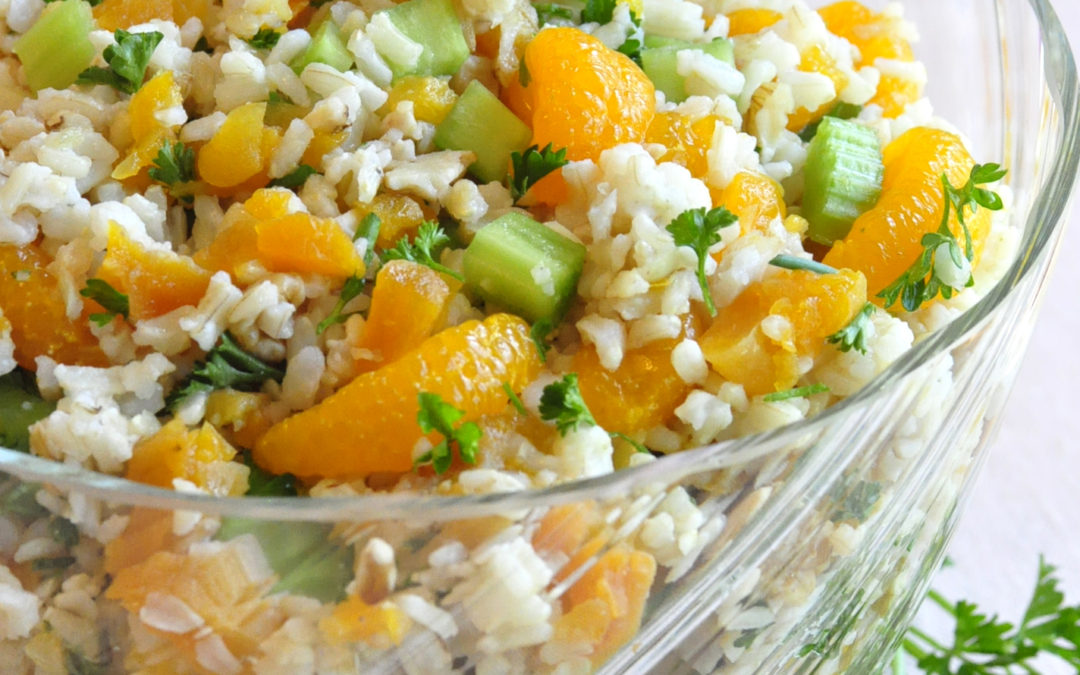by Jessica Linnell, PhD, OSU Extension Family and Community Health
Oranges are in season! Eating these nutrient-rich fruits can help brighten snacks and meals during cold winter months. Oranges are at their peak during the months of January, February, and March so now is the best time to enjoy them.
It is estimated that oranges were first cultivated in 2500 BC. They are a cross between mandarins (Citrus reticulate) and pomelos (Citrus maxima). If you aren’t familiar with pomelos they are a delicious citrus fruits that are gigantic compared to oranges, have a thick, spongy rind, and taste similar to grapefruit but are not as sour.
Oranges are grown all around the world. They first spread from China to India, Northern Africa, and the Middle East, and then later to the Americas during the age of exploration. During that time scurvy was a disease frequently affecting sailors. Oranges and other citrus fruits were a common remedy for scurvy but at the time it was unknown why they helped. Sailors planted trees along trade routes to prevent scurvy and in so doing introduced oranges all over the world. It was later discovered that scurvy was caused by a lack of vitamin C and citrus fruits are rich in vitamin C.
Why is vitamin C important? Vitamin C is an antioxidant that helps protect our body’s cells, helps with wound healing, and keeps our skin healthy. One orange provides 83 mg of vitamin C.
How much vitamin C do I need every day?
- Children 1-3 need 15 mg
- Children 4-8 need 25 mg
- Children 9-13 need 45 mg
- Men ages 18 and older need 90 mg
- Women ages 18 and older need 75 mg
What other foods have a lot of vitamin C? Most of the vitamin C we get comes from fruits and vegetables. Foods rich in vitamin C include tomatoes, potatoes, strawberries, spinach, and cruciferous vegetables like broccoli and cauliflower.
In addition to being a great snack, oranges make wonderful additions to many foods including salads, desserts, smoothies, and more. This salad is excellent on its own or it would be a delicious paring with a healthy protein like salmon or chicken.
Sources: Institute of Medicine, Dietary Reference Intakes (2007), Academy of Nutrition and Dietetics eatright.org
Orange Rice Salad
This recipe is from FoodHero.org
Ingredients
2 cups cooked, cooked brown rice
1⁄2 cup celery, diced
3⁄4 cup raisins or other dried fruit
1⁄4 cup chopped nuts
2 Tablespoons vegetable oil
1 Tablespoon orange juice or vinegar
1⁄4 cup parsley, chopped or 1 teaspoon dried parsley
3 green onions, washed and thinly sliced
2 ripe oranges peeled and separated into segments or 1 can (15 ounces) mandarin oranges with juice
1⁄4 teaspoon each salt and pepper
Directions
Mix all ingredients together in medium-sized bowl.
Chill for an hour to allow flavors to blend.
Refrigerate leftovers within 2 hours.
Notes
Try adding 2/3 cup diced green peppers or other crunchy vegetables.
Nutrition facts
Per serving: 200 calories, 1 g saturated fat, 15 mg sodium, 32 g total carbohydrate, 3 g dietary fiber, 17 g sugars, 3 g protein, 15% DV vitamin A, 35% DV vitamin C, 4% DV calcium, and 6% DV iron.

